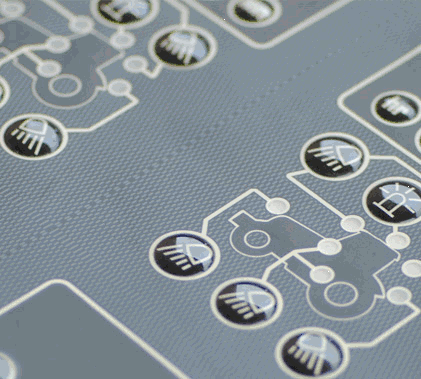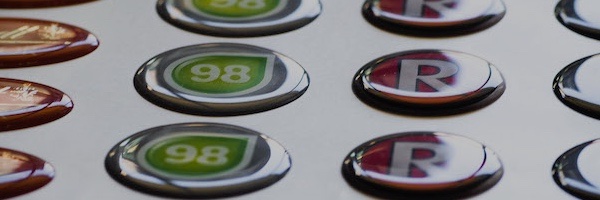Labels and stickersin a drop of resin or doming
Difference Between Resin and Varnish Finishes
How to Distinguish Between Resin Finish and Varnish
Are you unsure about the difference between resin and varnish? You're not alone.
These two terms are often used interchangeably, but they actually have distinct meanings and uses. In this article, we will analyze the differences between resin finish and varnish, and help you determine which is more suitable for your project.
Let's define the terms: resin is a natural or synthetic compound that hardens when exposed to air. It is commonly used in art and jewelry, as well as in construction and manufacturing. Varnish, on the other hand, is a transparent protective layer applied to wood, metal, or other surfaces to enhance their appearance and durability. In the case of resin, the thickness can reach almost 1.5 mm, while varnish has a thickness of only a few tenths of a millimeter, except in cases of relief varnish, like Braille-type. Both finishes offer protection to the underlying product, but the main difference is the thickness of each finish. The thicker it is, the more protection it provides.
But let's delve into their characteristics and uses:
Definition of Resin
Resin is a natural or synthetic organic compound of a viscous and sticky nature. It is usually derived from plants, such as pines, or can be synthetically produced from petroleum. Resin is used in various applications, such as adhesives, coatings, and compounds. It is known for its high resistance to heat, chemicals, and weather, making it a popular choice for industrial and commercial purposes.
Definition of Varnish
Varnish, however, is a transparent or translucent liquid used to provide a protective and decorative coating to various surfaces, particularly wood. It is typically composed of a resin, a solvent, and various additives, such as drying agents and UV inhibitors. Varnish is known for its ability to enhance the natural beauty of wood while providing long-lasting protection against moisture, abrasion, and discoloration. It is commonly used in furniture, flooring, and other woodworking applications. In graphic arts, varnished finishing can also be applied to any print, whether in screen printing, offset, or with specialized machines.
How to Correctly Use These Terms
Although both substances are used to protect and enhance the appearance of materials like wood, they are not interchangeable. Learning to use these words correctly in a sentence is essential for anyone who wishes to communicate with precision and professionalism.
When to Use the Term Resin
Resin is a type of synthetic material that is commonly used to create a glossy and durable finish. When using resin in a sentence, it's important to remember that it refers specifically to the substance itself, and not to the finished product. Here are some examples of how to use resin in a sentence: - "I mixed a batch of epoxy resin to use it as wood filler." - "The resin coating on this table gives it a very glossy finish." - "I prefer to use resin finishes on my adhesives and labels because it makes them more durable."
As you can see from these examples, resin is normally used to refer to the material itself or the process of applying it to a surface.
When to Use the Term Varnish
Varnish is a type of finish obtained by mixing resin with a solvent and applying it to a surface. Unlike resin, varnish can be used as both a noun and a verb. Here are some examples of how to use varnish in a sentence: - "I applied a layer of varnish to the table board to protect it from scratches." - "The varnish on this piece of furniture has yellowed over time." - "I prefer varnishing my woodworking projects over using other types of finishes."
As you can see, varnish can be used to refer to the finished product or the process of applying it to a surface. It's important to use the word correctly in its context to avoid confusion or communication errors.
After observing the differences between resin and varnish, it's clear that both have their own properties and uses. It is also important to note that both require proper handling and safety precautions. Always follow the manufacturer's instructions.
At Domestar, we are experts in adding value to your brand, and to do this, we use both resin and varnish finishes. We will be delighted to advise and assist you with whatever you need. Contact us

Example of relief varnish finish to highlight text. Unlike the resin drop finish, varnishing allows selectively highlighting parts of the print. In this case, unlike resin, varnish does not offer integral protection.

TAGS:
Resin Finish, Varnished Finish, Resin Drop
(c) Copyright 2022 Ireson SL. All rights reserved


